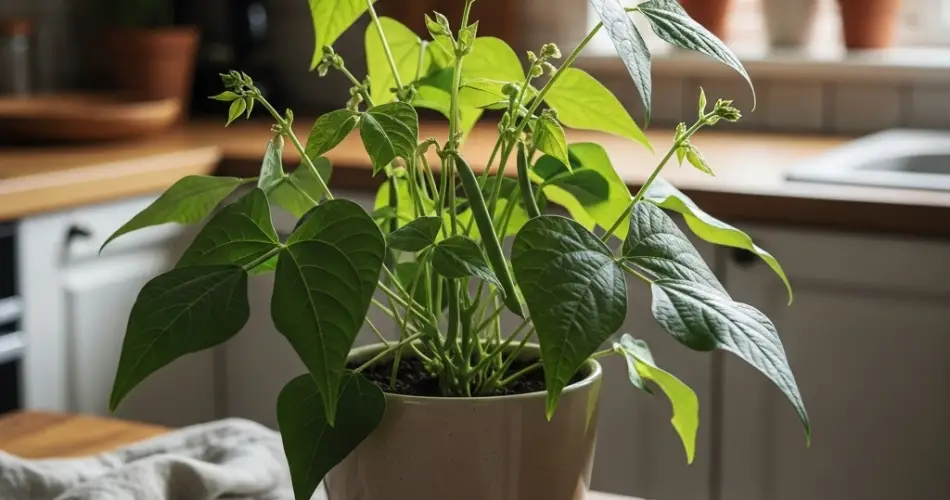Beans are among the most rewarding vegetables you can grow, and you don’t need a sprawling backyard to enjoy a plentiful harvest. With just a few containers and some sunshine, beans thrive in small spaces—whether on a balcony, rooftop, or sunny patio. Easy to grow and fast to produce, potted beans are a great addition to any home garden, offering both nutrition and beauty with their lush green vines and colorful pods.
Whether you’re growing bush or pole varieties, beans adapt well to containers and can yield a surprisingly large harvest with minimal effort. Here’s how to grow beans in pots for a fresh supply right at your doorstep.
Why Grow Beans in Pots?
Container gardening offers convenience, flexibility, and control. For beans, pots provide:
-
Space efficiency: Perfect for tight areas with no garden beds.
-
Mobility: Containers can be moved to maximize sunlight or protect from harsh weather.
-
Fewer pests: Growing beans off the ground reduces issues with soil-borne diseases and pests.
-
Soil control: You can ensure your plants get nutrient-rich, well-draining soil ideal for their growth.
Beans are also nitrogen fixers, meaning they enrich the soil for future crops—an added bonus if you’re rotating crops in containers.
Choosing the Right Bean Type
There are two main types of beans, and both can be successfully grown in pots:
-
Bush beans: Compact, fast-growing, and don’t require support. Great for smaller containers and quick harvests.
-
Pole beans: Tall, vining plants that need trellises or stakes. They take up vertical rather than horizontal space and often produce higher yields over a longer season.
Some popular container-friendly varieties include:
-
Bush: ‘Provider’, ‘Contender’, and ‘Blue Lake Bush’
-
Pole: ‘Kentucky Blue’, ‘Scarlet Runner’, and ‘Purple Podded Pole’
Choose according to your space and the type of support you can provide. Bush beans are best for short-term harvests, while pole beans offer continuous picking over several weeks.
Best Containers for Beans
Beans need space for roots to spread and good drainage to thrive. Use containers that are:
-
At least 10–12 inches deep
-
12–18 inches wide for bush beans
-
Larger, deep pots or trough planters for pole beans, especially if installing a trellis or stake
Terracotta, plastic, fabric grow bags, or wooden boxes all work well. Just make sure the container has drainage holes to avoid soggy soil and root rot.
Soil and Fertilization
Beans do best in loose, fertile, and well-draining soil. Use a quality potting mix enriched with compost or aged manure. Avoid heavy garden soil in containers, as it can compact and cause drainage issues.
Beans don’t require much fertilizer—too much nitrogen will lead to leafy plants with few pods. A small amount of balanced fertilizer (or compost) at planting is usually enough. If needed, a diluted, low-nitrogen liquid feed once during flowering will help boost pod development.
Planting Beans in Pots
Beans are sensitive to transplanting, so it’s best to sow seeds directly into the pot:
-
Fill your container with moist potting mix.
-
Sow seeds 1–1.5 inches deep and 3–4 inches apart.
-
Cover lightly with soil and water gently.
-
Keep the soil consistently moist until seedlings appear—usually within 5–10 days.
For bush beans, you can plant in blocks for a denser crop. For pole beans, plant around a central trellis, stake, or tripod to allow vines to climb as they grow.
Sunlight and Watering
Beans are sun-loving plants. Provide at least 6–8 hours of full sun daily. Place pots in the sunniest spot available, rotating if needed to ensure even growth.
Water regularly, especially as the plants begin to flower and set pods. Beans prefer consistent moisture but dislike soggy conditions. Water when the top inch of soil feels dry. Container plants may need daily watering in hot weather.
To reduce moisture loss and stabilize temperature, mulch the soil surface with straw or dried leaves.
Supporting Pole Beans
If growing pole beans, be sure to provide a support structure from the start. Use:
-
Bamboo stakes or trellises
-
Tomato cages
-
A-frame or teepee-style frames
Train the vines gently as they grow, and they’ll quickly climb and begin flowering.
Bush beans generally don’t need support but may benefit from small stakes if they get top-heavy with pods.
Harvesting Beans
Harvest beans when they’re still young and tender—typically 50–60 days after planting, depending on the variety. For bush beans, pick regularly to encourage more pod formation. Pole beans often produce over a longer period, so check daily once pods appear.
Use scissors or pinch off the pods gently to avoid damaging the plant. Avoid letting pods over-mature on the vine, as this signals the plant to stop producing.
Final Tips for Success
-
Stagger plantings every two weeks for continuous harvests.
-
Watch for pests like aphids and spider mites—treat early with neem oil or insecticidal soap.
-
Don’t over-fertilize—beans are light feeders and do best with moderate nutrients.
-
Replenish soil with compost or rotate crops if using the same containers season after season.
Growing beans in pots is easy, productive, and incredibly satisfying. With just a little space and care, you can enjoy a bountiful harvest of crisp, homegrown beans—perfect for steaming, sautéing, or tossing into salads—all from the convenience of your own balcony or patio.



